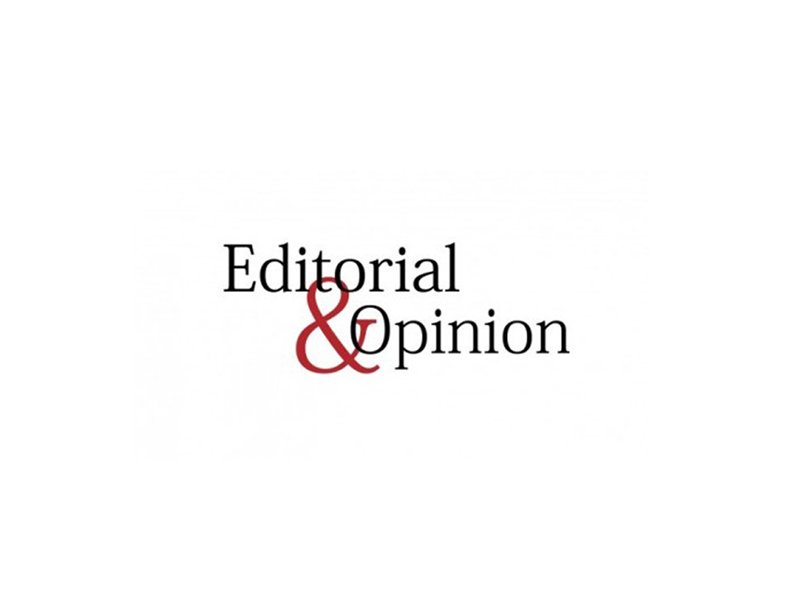
Considering this, the official status of English in Pakistan requires serious modifications. According to Section 251 of the Constitution of Pakistan: 1) The National language of Pakistan is Urdu; 2) The English language may be used for official purposes until arrangements are made for its replacement with Urdu; and 3) A Provincial Assembly may by law prescribe measures for the teaching, promotion and use of a Provincial language in addition to the National language.
Despite English being constitutionally trivialised, Urdu is still not the ‘official’ language nor has it entirely replaced English. This has crippled the country’s education system, polarising students according to English language capability. The non-adherence to constitutional rules by private educators has created a severe backlash for government-run schools. Dr Tariq Rahman writes, “The civil bureaucracy and the armed forces ... invested heavily in creating an English-medium system of instruction for the elite contrary to the declared policies of the state of Pakistan”. The private and elite schools’ emphasis on English gives their students a far greater competency in the language. Consequently, these students have the edge when it comes to pursuing higher education. Simply, this English-Urdu clause of the Constitution is nothing short of a severely discriminatory rule that divides the population into ‘educated’ and ‘uneducated’ masses. Unarguably, proficiency in English is among the outstanding status symbols in our society.
Students who are poor in conversational and written English are poor teachers if they choose the profession. With chances of them being hired by an elite/private school system practically nil, they end up teaching in the very schools of which they are the product. So continues the lame cycle for dearth of better textbooks and curricula, teachers poorly versed in the language and/or lack of modern, teaching methods. The English syllabus at the national or ‘official’ level doggedly designed as per the Constitution adamantly gives precedence to Urdu. As a result, bachelor’s degree holders are unable to converse or write an essay in English demonstrative of a quality education.
Though the standard of English at the master’s level takes a phenomenal leap ahead, the students who come this far are incompetent at handling the highly elaborate course of studies in the language at this level. The proof is the continually declining results of the external candidates taking this exam over the past few years. In MA English Previous 2010 and 2011, the pass percentages were 2.35 and 1.16, respectively. In MA Final 2010 and 2011, the pass percentages were 14.28 and 13.33, respectively. This situation reflects poorly on the university and upon the qualifications of teachers.
Though the Higher Education Commission of Pakistan (HEC) is doing its job of formulating policies quite satisfactorily, things start to go awry when it comes to implementation. There is a missed connection between the constitutionally defined status of English and the HEC definition. HEC policies regarding English at the BS/BA and MS/MPhil levels with reference to reading, listening and speaking skills include: 1) To develop the ability to communicate effectively; 2) To understand and use English to express ideas and opinions related to students real life experiences inside and outside the classroom; 3) Write organised academic texts including examination answers with topics/thesis statements and supporting details; 4) Write argumentative essays and course assignments
Evidently, none of these goals is being met since the total proportion of the population that speaks English is determined to be about three to four per cent — a number startling enough to propel us into making a realistic assessment of where the state of the English language is really going in the country.
Published in The Express Tribune, January 3rd, 2013.
COMMENTS (13)
Comments are moderated and generally will be posted if they are on-topic and not abusive.
For more information, please see our Comments FAQ














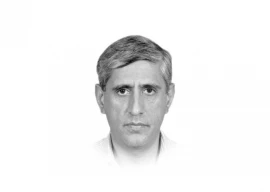

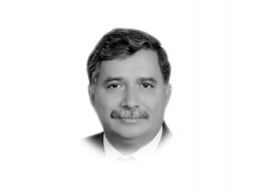

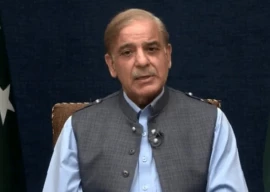
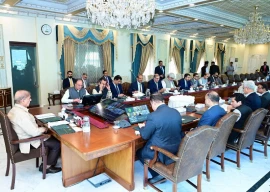




@gujranwala789: By the way when people got killed and into exodus from west Punjab they brought their lahori Punjab too just like people who moved from east Punjab and brought their doabi Punjabi with them. So chill and calm down otherwise I would feel you want more associative with a Arabi.Rab rakha
@prabhjyot singh madan:
The same could be said about Hindi/Urdu, they are very similar but at the same time very different, it just depends on the perspective of every individual. Bye the way, the name of our language spoken in Gujranwala was Lahori language, the world punjabi did not exist in history before mughals.
@gujranwala789: Punjabi follows two scripts. shahmukhi and gurmukhi scripts.shahmukhi is Persian by nature and gurmukhi is the script introduced by the Sikh gurus. shahmukhi is written in western Punjab and gurmukhi is not a Hindu script. shahmukhi is not Arabian otherwise Spanish and English letters are the same. please respect shahmukhi script and don't compare it with the wild Arabs. please ask the Iranians if they love Arabs. anyways I am a Punjabi and proud to be one and I love my language.reading a Punjabi book even if the dialect and script is diffirent should not concern a fellow Punjabi. Bulley shah and Baba farid shakergunj the folklore are a common heritage. please learn from sindhis how they don't differentiate between themselves.anyways, depressing, my family was originally from gujranwala. take care, Rab rakha , sat sri akal.
@prabhjyot singh madan:
Indian punjabi and pakistani punjabi are very different, the difference is exactly like hindi and urdu. I have no interest in indian punjabi the way I have no interest in hindi , my interest is limited only to muslim punjabis and punjabi language as it is spoken and written in pakistan which is full of arabic and farsi vocabulary.
@Mirza. I couldn't agree more with you. The two tier education system is taking us nowhere. Being a product of Urdu medium school, nobody can narrate this ordeal better than me. I have been through both the mediums and my journey is replete with many hurdles. In retrospection, i regret on wasting my life an Urdu medium school. Unfortunately, the language is serious problem because it has been politicised in Pakistan. for instance, In Khyber Pakhtunkhwa, when i was in school and when mullahs were in power, they introduced Arabic language and when they were out of power and newer provincial government installed with new party in power i.e. (ANP) in our case, then they had simply throw away the educational policy of erstwhile provincial government and had brought new educational policy with a special focus on language of their choice in curriculum. so, this thing is really hurting our posterity. If we want to end this discrimination and to be at par with the world in the field of education, then we must give serious thought to this language problem. The policy of our government should be clear in this regard, and English should be introduced on emergency basis in all the public schools. English is a langua franca and is spoken world wide. The biggest proof is that even the advance countries like Germany have introduced English as a medium of instructions in most of institutions. Special emphasis should be given to creative writing in English at graduate and post-graduate levels. Most of the students feel deficiency in writing standard English, which can be psychological barrier in their success. So, To overcome this weakness, special emphasis should be given to creative and argumentative writing.
The system favors the elite and is cleverly designed to jeopardize the success of under privileged. My grandfather attended an English medium school, and wrote immaculate English. However, my Dad attended a Govt: school before the partition, and started to learn English past primary school, and excelled in both sciences, math, and English language. The dilemma is what has worked for a long time our higher ups do not want to build upon that success but try to find ways to assist the noeveau riche to segregate and hinder the rise of those who are worthy by creating two distinct curriculums.
@gujranwala789: Agreed 100% with you. Punjabi is thriving in Indian Punjab. It is is my mother tongue and happyto know it, reading a Punjabi novel connects me with my province. I live in west Bengal at peace though. Rab rakha, sat Sri akal
@Pr Sharma I disagree a little bit. Years ago I came across an old Urdu Physics book in may Dadi's cupboard which was surprisingly very similar to my own O'level physics book. Although it was about 20 years older.
The point is though I couldn't understand one thing written in it. The Urdu used and the technical words created by twisting random Persian words together and putting them in textbook was extremely hard to understand and trust me I do have a very good Urdu. For 90% Pakistani kids learning that kind of hard Urdu is probably harder than learning English. Not because they don't want to learn but because Urdu is not their mother tongue. ANd plus all the resources and stuff on the internet are not available in regional languages so why not make them learn English.
the govt needs move on a war footing to ensure that all govt biz is conducted in Urdu and or the regional language where applicable. plus teaching in all schools should be in urdu or a regional language where applicable, english should only be taught as a language no other course should be taught in English schools and/or parents that dont like it can either close down or move abroad and this should apply all the way to higher eduction i.e. Masters/Phd etc. the dearth of quality books in the language is a concern which can easily be fixed with the govt leading a program to quickly translating the latest scientific and engineering books/articles/papers into urdu and regional languages. all the coutries that the elite, who perpetuate this system, admire and moan about in their drawing rooms when discussing Pakistan's failures forget that they all teach in their own language kids there are not forced to study in an alien language that they are not exposed to in the real world, infact most of their students take English as a second langauge well into their professional education and even then only because its the de facto language of business globally otherwise they would ingnore it. lack of pride in ones own culture is a harbinger of decline and all the fancy gadgets and political experiments will not be able to fix it.
PS. pride in ones culture does not equal being un critical of its failings and its more negative aspects
There is no useful books available in Urdu or regional language on science and technical subjects for higher study. Urdu and regional language do not have meaningful/ suitable words for the terminology used in technical subjects . Non availability of quality books in local language on technical subjects does not leave level playing field for students This is one of the main reason that students of English medium schools are generally far ahead of students of Urdu medium schools avuncularly in higher study courses.
There is no need to pay any more attention to urdu because it is already enjoying over-representation in pakistan´s national affairs eventhough spoken as mother language only by 7 % people. Why no one writes articles about the plight of punjabi language which is the mother language of 45 % of the population of pakistan and still does not have any state recognition.
This is a thought provoking Op Ed thanks for that. I agree 100% with the writer on this. I distinctly remember the results for metric exams used to have (I am not updated) most of the top positions by the Urdu medium Govt school students. However, in the intermediate exam when they can go in medical/engineering/army commission most of the top positions go to the English medium. The two tier education system kills the growth of the talented and deserving Urdu medium students and put them in complexes for the rest of their lives. This two tier system of education must be dismembered once and for all. I know some students who have come on scholarships in the west but failed miserably because they could not comprehend what was going on! If some love Urdu so much then there should only be education in Urdu not English for a level playing field. While in the army most officers are from English medium most all soldiers are poor Urdu medium. The colonial system is still thriving.
Years ago, those responsible for giving a clear direction on this matter did not do so knowingly and with malicious intent for they understood, full well the disastrous consequence. Today we are reaping the fruits of their ill intent but instead of boldly correcting this, our leaders ( if one can call them that ) today do not even comprehend the importance of this discourse and the nation keeps suffering.